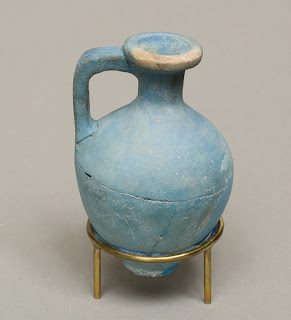 Egyptian Juglet, ca. 1750–1640 B.C. | Blue is considered to be the first synthetically produced color pigment. Egyptian blue (cuprorivaite) was created around 2,200 B.C. It was made from ground limestone mixed with sand and a copper mineral, such as azurite or malachite, then heated between 1470 and 1650°F. The result was an opaque blue glass which was then crushed and combined with thickening agents such as egg whites to create a paint or glaze. |   |



No comments:
Post a Comment